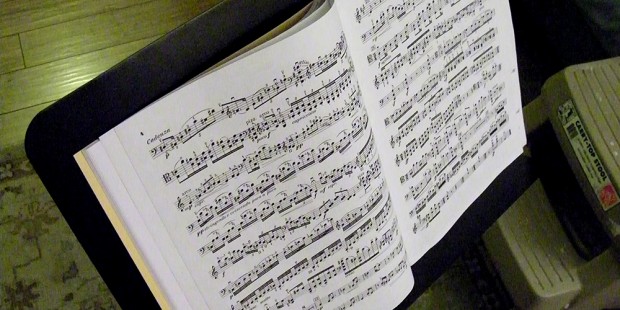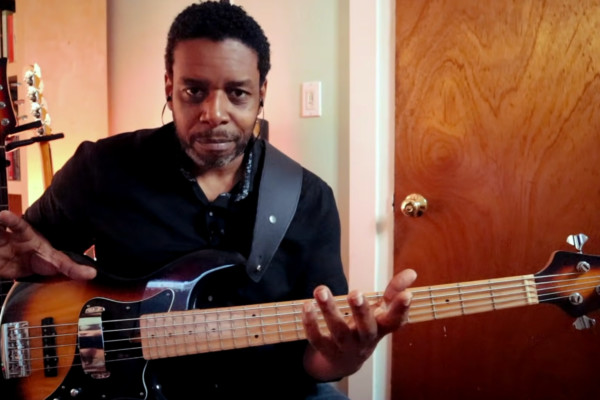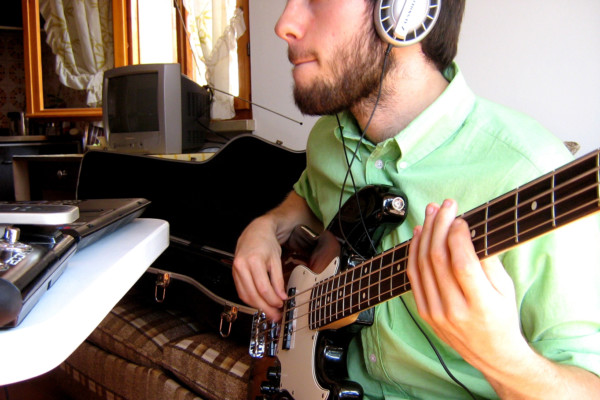Discovering the Right Practice Routine

Q: Some people stand strongly by the notion of having a true practice routine while others claim that routines stunt growth, because the same thing is being practiced each day (e.g. scale modes in broken thirds with such-and-such technique striving for X bpm). Will you please elaborate on what a routine is and how to create one that keeps one out of the dreaded comfort zone?
A: Nice question! I stand strongly by the presumption that no one approach will work for everyone. As you said, some people thrive with a routine, others get uninterested by the prospect of doing the same thing every day. I think that a practice regimen is worth exploring for everybody. After that, each person would have to make their own decisions about how they can maximize their time and not just work but internalize the information.
For example, some people have a hard time focusing on things that don’t engage or interest them. I fall into this category: I was a thoroughly average student. However, I did thrive outside of the scholastic environment, largely due to the fact that I wanted to be a better musician so badly that I wound up exploring my own ways of assimilating the information I needed. I primarily did this through finding ways to engage my interest rhythmically while forcing myself to work on Jazz chord changes, which led me to a ton of great technical discoveries.
What I didn’t do was set a routine for myself. This is only because I knew that it would not work for me. I play when I feel like playing, unless I have to learn material for a gig. If that’s the case, I work hard and make time in my schedule to shed tunes, and I stick to my rehearsal schedule. A rehearsal schedule is different than a practice schedule, in my life at least.
Sometimes I play just to have fun, but when I decide that it’s time to practice, I make sure that it’s challenging and I don’t allow myself to do anything that I’m necessarily good at.
I have noticed that most of my students do much better with a set practice regimen, and I often help them to develop one. It’s up to you to decide if that works for you.
What I suggest when developing a regimen is this: make a list of the things you’d like to work on throughout the week, month, year. Then estimate how much time you can practice each day.
Next, you have to adjust the time spent on each topic based on your attention span. Don’t worry about how much time you have each day and deciding the topics evenly but, rather, pick an amount of time you can focus well on each topic.
Topics can be spread out over several days. You don’t have to it everything each day!
For example, your list of goals may look like this:
- Reading
- Speed and articulation
- Rhythm and subdivisions
- Improvising through changes
- Walking bass lines
- Scales and modes
Say you decide you can spend 30 to 60 minutes on each subject, but only have one or two hours per day to really practice. I would break that list up over multiple days.
Now, it’s also important to realize that you don’t want to take too much time in between shed time with certain subjects like reading notation, for example. Certain subjects fall from your memory pretty quickly and require you to build upon what you’ve already worked on pretty frequently. For these subjects, I would work them into the daily routine.
I might suggest (based on our prior list) this routine for 2 hours a day:
Day 1
- Reading cello suites, melodies from the Real Book, Bass lines, etc., and work through the notation one note at a time (30 minutes)
- Combine rhythm and scales and modes by picking a rhythmic pattern and running various scaler patterns. Two birds with one stone! (30 minutes)
- Speed and articulation exercises (30 minutes)
- Improvising through changes (30 minutes)
Day 2
- Reading (again) (30 minutes)
- Walking bass lines (in place of improvising through changes. One feeds the other.) (30 minutes)
- Combine speed and articulation with scales and modes by working 16th notes and triplets through your scaler patterns (30 minutes)
- Free play (30 minutes)
Repeat that two day cycle: day 1, day 2, day 1, day 2…
That’s just one example of a lesson plan I might develop with a student. Each lesson plan should cater to the players needs with consideration to what kind of player they want to be. Not everyone needs to be a blazing soloist. If you want to be a meat-and-potatoes-type player who just wants to work on groove, time and feel then develop a plan that caters to that.
I also encourage you to take breaks and relax. It’s not an endurance race. If you’re eyes are tired, your ears are tired, or you’re just not into it at the moment, take a break. But push a little bit at the same time. Don’t allow yourself to be lazy, and don’t work yourself to death. Balance it all out and take your time.
The phrase “you need to go slow in order to go fast” applies to so much in music, not the least of which is your practice time. Take your time and practice with intention. Make sure that you have identified an issue to work on and take it apart, piece by piece, working on every small aspect of that problem until you can slowly piece it back together and develop that skill, lick, scale…
If we are frantically trying to learn everything at once because you have so much to learn, you won’t get as much out of your time because it won’t be focused. You will never know it all. Don’t worry about that. Just work on one thing at a time and it all comes together throughout your lifetime.
One final thought. We can continue to develop without the instrument in our hands. Listen to music that relates to what your goals. Often times, being able to really hear what it is that you want to sound like can help you to play that way (more than you might think). If you can’t hear it, you can’t play it. I can’t count the number of students who wish they could play like a ‘jazz guy’ but never actually listen to jazz! It’ll never happen unless you internalize the music you want to make.
How about you? What do you find helps you balance the practice routine, growth, and keeps you going? Please share in the comments.
Have a question for Damian Erskine? Send it to [email protected]. Check out Damian’s instructional books, Right Hand Drive and The Improviser’s Path.




Great stuff thanks Damien! Going to try your example practice routine sounds good!
Do you know me, “frantically trying to learn everything at once” because I am this statement. :-)
Any suggestions for keeping a journal? I have electronic journals and Paper journals and have a hard time sticking to either.
Great article, Damien. Very insightful.
I wish I had 2 hours a day to practice…